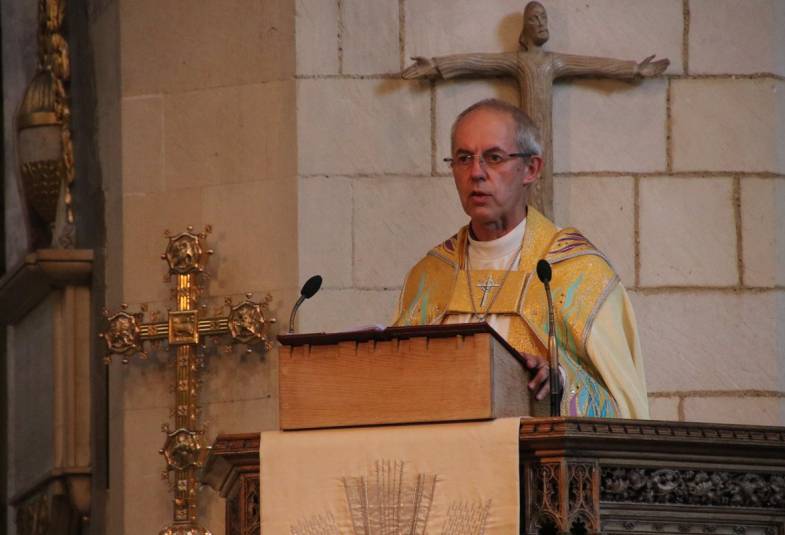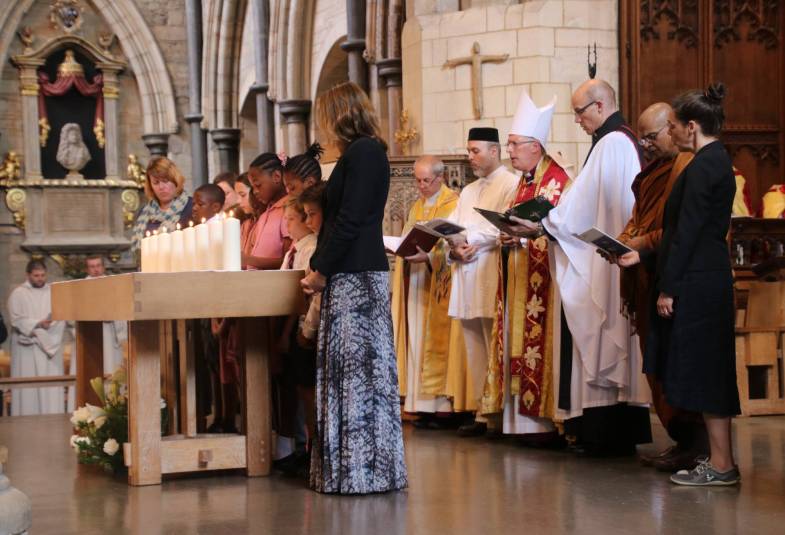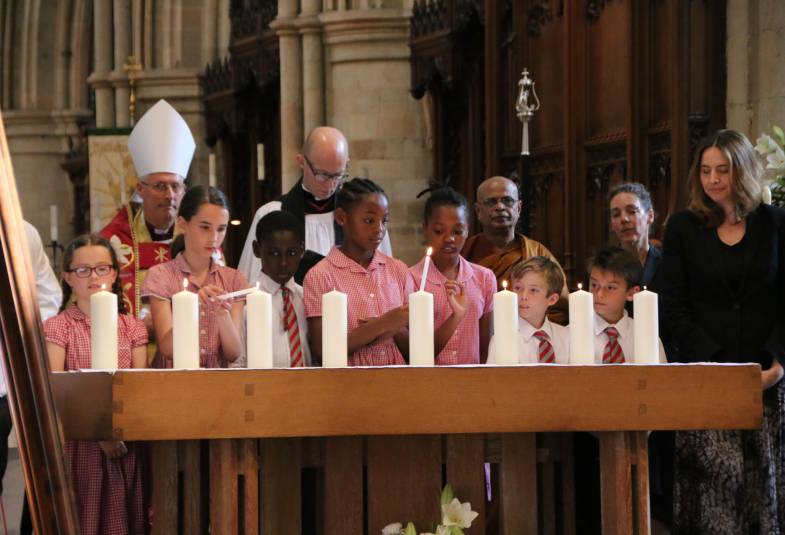16/06/2017

Two weeks ago, this cathedral, the area around it, bars and shops and streets, suffered appalling violence. The impact of that violence remains. It is found in the memories and the grief of so many in this cathedral, in the marks on doors and walls and pavements and roads, in the pain of those in hospitals, and in the shocking and terrible loss suffered by those who are friends and families of the killed.
Those who planned, committed or advocated these evil deed thought that they could terrify, divide and demoralise Londoners, even the whole British people. Indeed, the produced unity, revealed community on a scale not seen for years. They attacked one of the most vibrant parts of the most cosmopolitan city on earth. In doing so they attacked people from all over the world. Southwark Cathedral today is the focus of a grief that is truly international, immeasurably deep and whose impact will be felt for years.
To you who suffered and who suffer today, we say that we weep with you, our hearts are broken by your pain and agony, we do not have adequate words or the ability to lift from you the great burden which you are bearing, but we will walk alongside you, sharing it as we can and may.
As we see you, as we see this area with its constant memories of what has happened, we seek to share with you in a way that reminds you that you are not alone, that the pain you suffer is not considered passing but profound, and that the grief for the lost is something that will forever be inscribed by our memories in these very stones, stones that over so many centuries have seen so much violence, but have also seen the renewal of hope and the overcoming of evil.

The first reading, which the Mayor read to us, heard comes from a man who himself had known great tragedy and despair, success and achievement, and they had left him with the sense of the inevitability of both good and bad being part of life’s experience. Two weeks ago, we saw both, not only the horrors of desperate, wicked people, but also the heroism, the self-sacrifice and courage of the emergency services, of many who were just out for the evening or run bars and shops and restaurants, who responded immediately to protect and support those around them. To those especially who are here from the first responders we say this: your dedication, courage and effectiveness are beyond measure. This was the second event in London, which we might hope only to see once in a generation. Most of you have since had to face a third at the Grenfell Tower, all in a few weeks. Your colleagues in Manchester have done the same. We thank you with all our hearts. We thank also the Mayor for his leadership, his strong words and his calm example.
The second reading comes closer to those for whom all today is shock and trauma and pain and sorrow. Two of Jesus’ followers, utterly consumed by despair and grief, walk away from Jerusalem talking over the events around the crucifixion of Christ, the end of all their hopes and ambitions for a free country, for a great future, and the personal loss of the most extraordinary human being that has ever lived. A figure draws alongside them, one they do not know or recognise, and it is only at the end of the story that they realise that it is Christ, risen from the dead, conquering all darkness.

The disciples returned to Jerusalem immediately, still not knowing all the answers, but with just the beginnings of hope and a sense that there is a future, in which life conquers death, in which justice confronts evil and overcomes it, in which pain and trauma and memory are healed and do not dominate our lives. That hope, those shafts of light, first faint and flickering, but growing brighter until we share the fullness of sight and hope eternally with those whom we love, all these are the gift of God in Christ to those who receive them. Regardless of our faith, when we walk with the suffering, when we shoulder a little of the burden, we become that figure walking alongside the two disciples, the mysterious Christ they cannot see, and hope is born.
We are here in this building which was built to say that the future that each of us has in Christ is one of life, and hope, and eventually, hard though it may be to see it today, of joy, never unmixed with grief and loss, but always confident that in all our sorrows and losses and griefs, the power of the resurrection, and of life, is ever greater. Hope flowers in the desert of suffering when it is watered by communities of love, for through them Christ comes, light dawns, and lives shattered in grief and pain find astonishingly that they will live again.